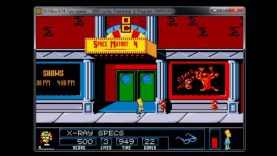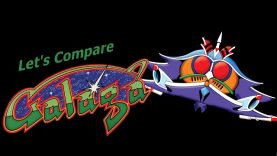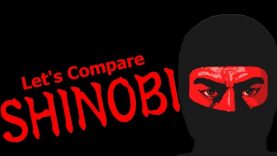Let’s Compare ( Shinobi )
Gaming History Source
Please Consider becoming a patreon.
https://www.patreon.com/ghs?ty=h
Like us on Facebook !
https://www.facebook.com/GamingGeeks
Video Locations
1. Arcade 0:40
2. MS DOS 4:23
3. ZX Spectrum 7:15
4. Amstrad 10:43
5. Commodore 64 13:42
6. Nintendo Entertainment System 16:40
7. Sega Master System 20:23
8. Atari ST 24:07
9. Amiga 27:50
10. PC Engine 31:33
Description Source
http://strategywiki.org/wiki/Shinobi
Shinobi (忍 -SHINOBI-?) is an arcade game, developed and published by Sega. It was originally released in 1987 and ported to numerous systems. The game spawned numerous sequels.
A re-worked version was released for Xbox 360’s Xbox Live Arcade on June 10, 2009 with HD support and online leaderboards. The original coin-op version of the game was released for the Wii Virtual Console in Japan on July 14, 2009, in the PAL regions on October 23, 2009 and in North America on December 7, 2009.
Plot
Shinobi is about a ninja named Joe Musashi who has to stop a criminal organization called “Zeed” who are kidnapping the children of the Oboro clan. Through five missions of increasing difficulty, Musashi must make his way to Zeed’s headquarters and free all the hostages before confronting Zeed’s leaders known as “Ring of Five”, which are formidable enemies on their own. “Ring of Five” are the bosses at the end of each level. Below is the list of them.
Ken Oh – A gigantic samurai-like wizard who can throw fireballs.
Black Turtle – A leader who is piloting or aboard an attack helicopter.
Mandara – A Hinduistic guru who is, in fact, cyborg.
Lobster – A large samurai with a V-shaped symbol on his head who wields a sword.
Masked Ninja – The main leader of Zeed and the last boss, he is a powerful ninja with vast magical and physical powers. His true identity is revealed to be Nakahara, Joe Musashi’s mentor. Nakahara’s name is a reference to the Musashi-Nakahara Station. His name is meant to be a hint of his true identity as “Nakahara Musashi”, Joe Musashi’s father.
Gameplay
The five missions in the game are each three or four stages long. Several hostages are being held in each stage; Joe must rescue all of them before he is allowed to finish the stage. The last stage in each mission has no hostages, but instead features a powerful boss character whom Joe must defeat. After completing each of the first four missions the player is taken to a bonus stage, where he can earn an extra life if he is able to kill all of the ninjas leaping towards him. Completing the fifth mission ends the game. Also, once the fifth mission begins, continues are no longer allowed; the player has to finish the game with however many lives he has left at that point. If the player earns a place on the high score board, the number of credits it took him to get that score is displayed along with his score.
Joe’s standard weapons are an unlimited supply of shuriken, along with punches and kicks when attacking at close range. One hostage per stage gives him a power-up. When powered-up, his throwing stars are replaced by a gun that fires large, explosive bullets, and his close-range attack becomes a katana slash. Joe can also perform “ninja magic,” which may be used only once per stage and kills (or damages, in the case of bosses) all enemies on the screen. Since most enemies appear in the same place on each level, it is possible to master the game by memorizing their locations and devising patterns to defeat them.
At the end of each stage, the player receives score bonuses based on performance. Completing the stage without using ninja magic earns or even without using any throwing stars or bullets earns the player a point bonus. The player has three minutes to complete each stage; remaining time at the end of the stage is also converted to bonus points and added to the player’s score.













